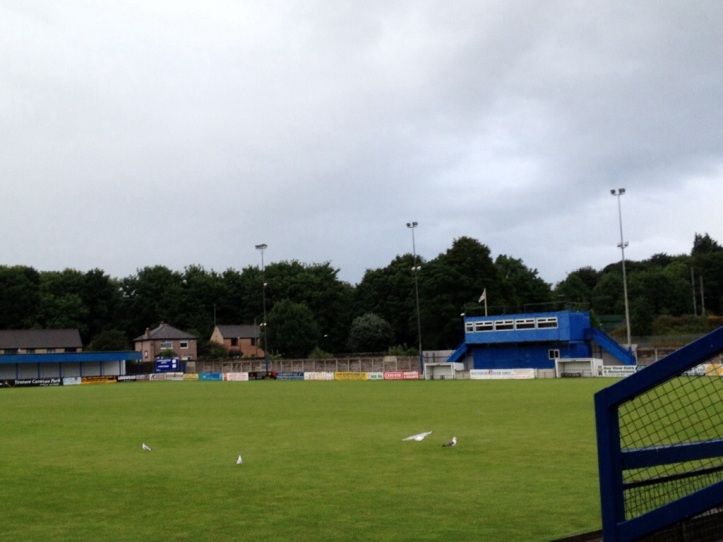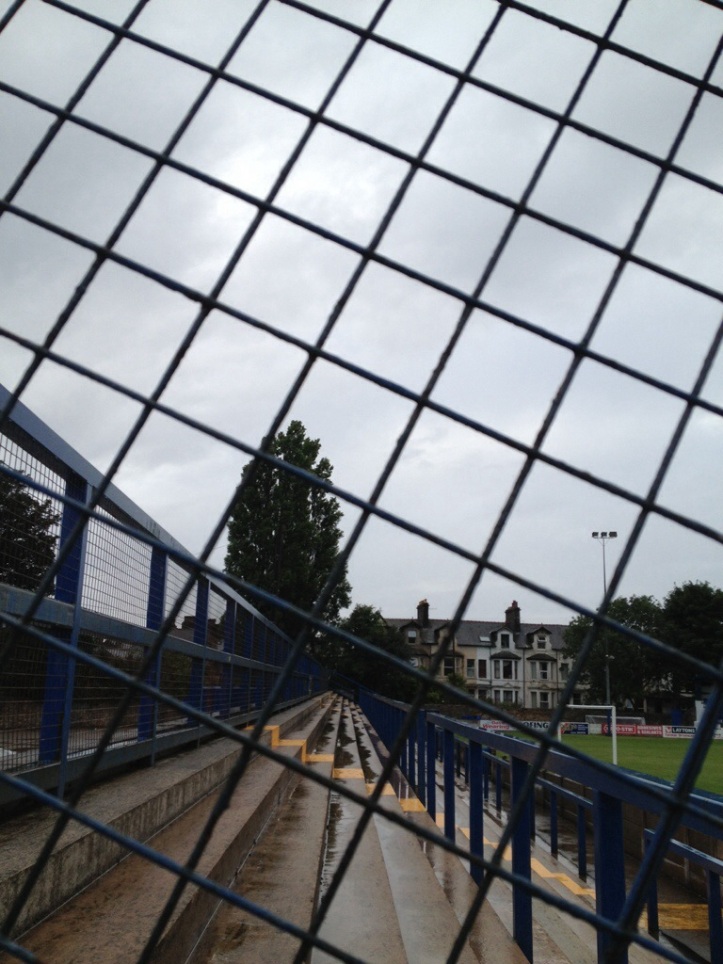Right then, we should get things out of the way first. That’s not a spelling mistake – Lancaster City’s ground really is called Giant Axe.

I have no idea why. It’s not particularly giant, and it’s not shaped like an axe, but as far as names go, wow! Giant Axe! That’s up there with, well, is there any comparison? The Machine Gun Stadium? The Rocky Arena? Giant Axe… that’s incredible.
There’s not a lot to say about Giant Axe. It’s a perfectly tidy non-league ground, arguably on the side of fantastic. There’s a small covered area for standing, a big seated stand plus some proper terracing. In terms of terracing, it was proper good stuff rather than old path, which covers the other touch line. But either way, who cares if it’s good or bad – it’s called Giant Axe!
One weird thing is the club’s obsession with portakabins. Their turnstiles are made out of portakabins, the club’s offices is the same, plus there’s a couple on top of each other on one side of the pitch. I’ve no idea if there was a shop in Lancaster with a special offer on, but god bless them the club got their money’s worth.
Surrounded by greenery just outside of the city centre, even the portakabins can’t put you off. It’s a nice ground with a bit of character. Not exceptional but tidy and lovely and well kept.
And that is about that. It should be a bad thing when the best thing about your ground is its name, but thankfully the Giant Axe is a perfectly pleasant stadium, regardless of not quite living up to its moniker.















Giant Axe Farm was the home of my great grandfather John Cottam.
His youngest son Thomas was my grandfather.
Alan Cottam Blackburn
“Giant Axe Field was given it’s name as it was the centrepiece of a sports club. The exterior wall was, when viewed from above, the same shape as an axe head. In those early years tennis, hockey and rugby were also played at the ground and the football pitch was at the centre of a huge circle of grass called ‘the sixpence’, which also featured cricket pitches.”
on Monday 28 May 1896 Alfred Tysoe of Skerton Harriers won the Northern Counties 1000 yard championship at the Lancaster Whitsun Sports, which were held at Giant Axe Field. the same day, the English and Scottish 100 yard champions had the third in a series of five races to determine the Champion of Champions. Charles Bradley (Huddersfield AC) was the English 100 yard champion from 1892-5, and Alfred Downer (Scottish Pelicans AC) was the Scottish 100 yard and 220 yard champion in 1893-95. in the race at Giant Axe Field, 6000 spectators saw Bradley win by six inches to take a 2-1 lead in the series.